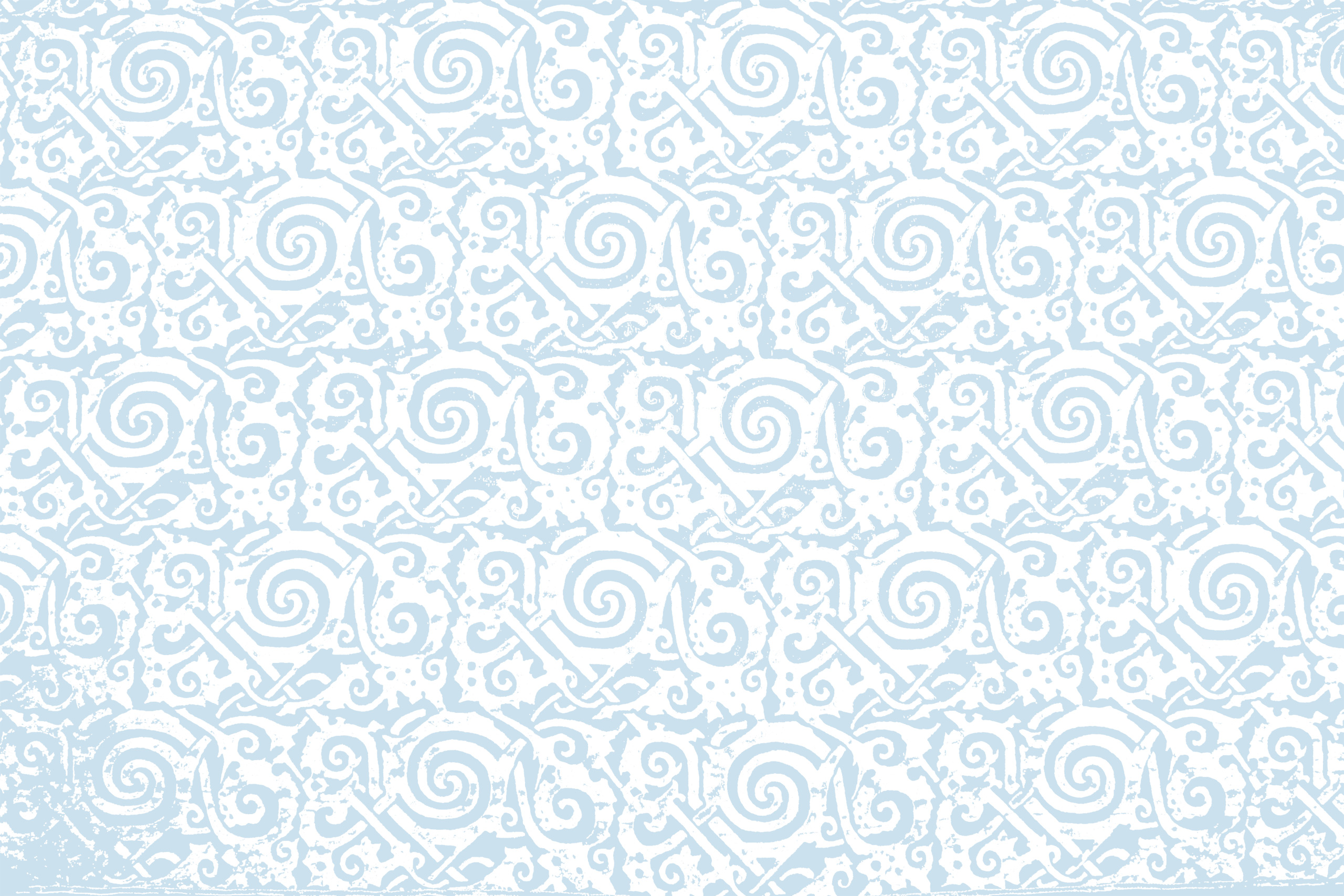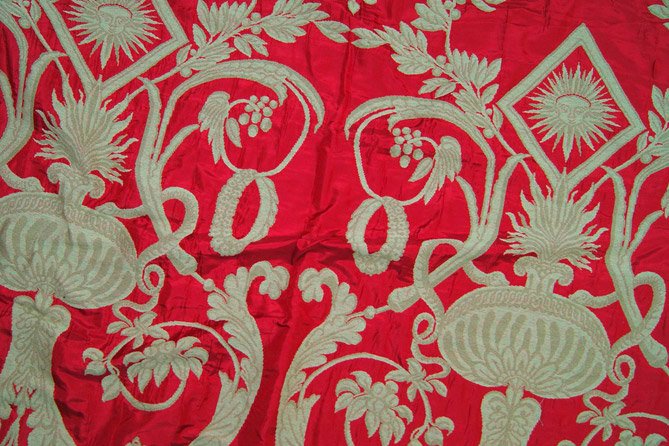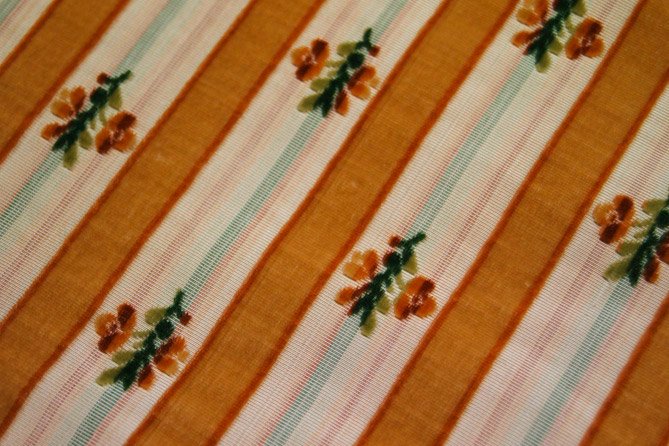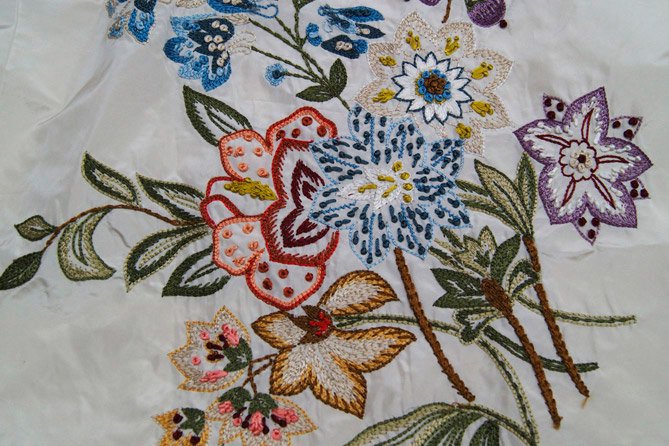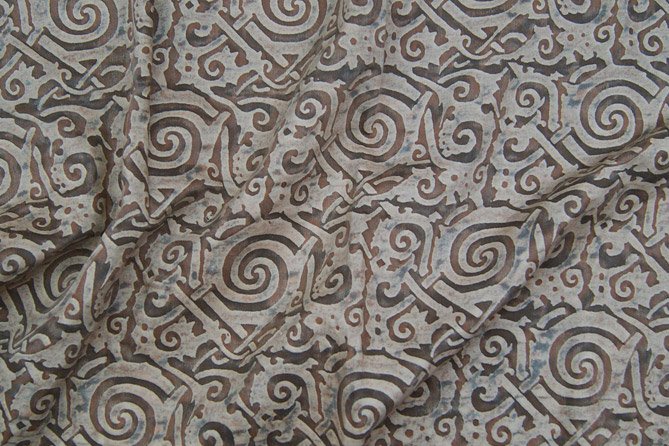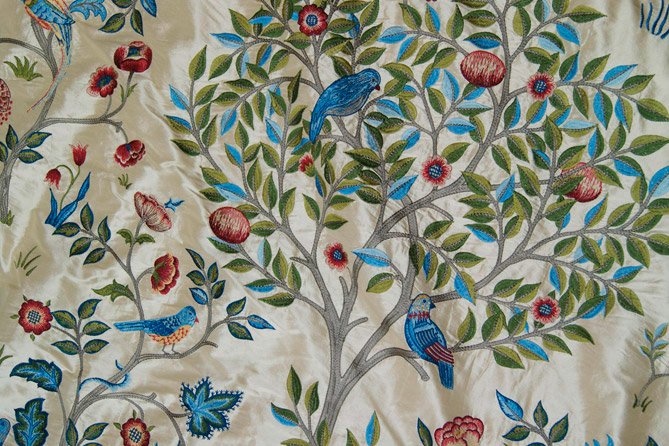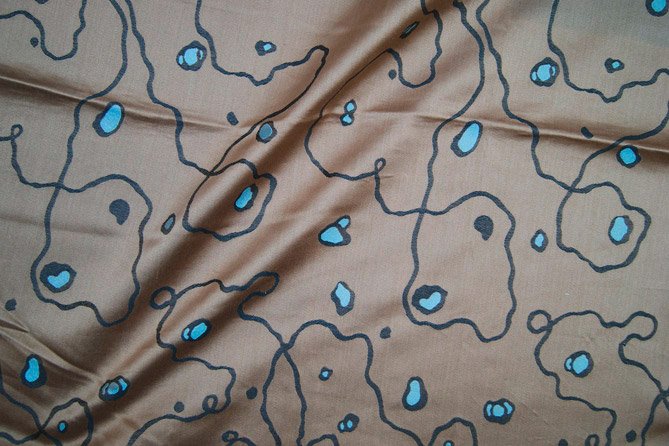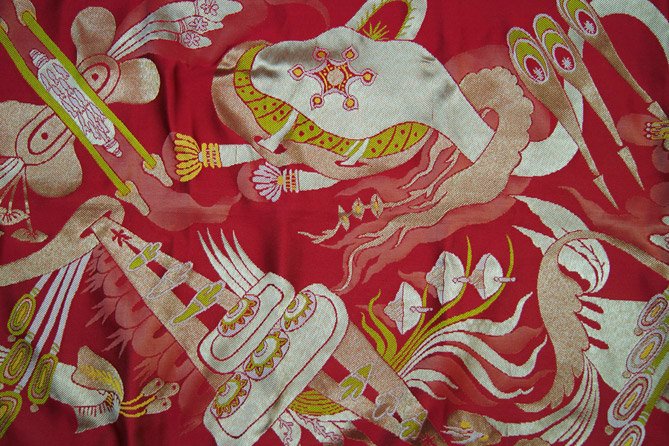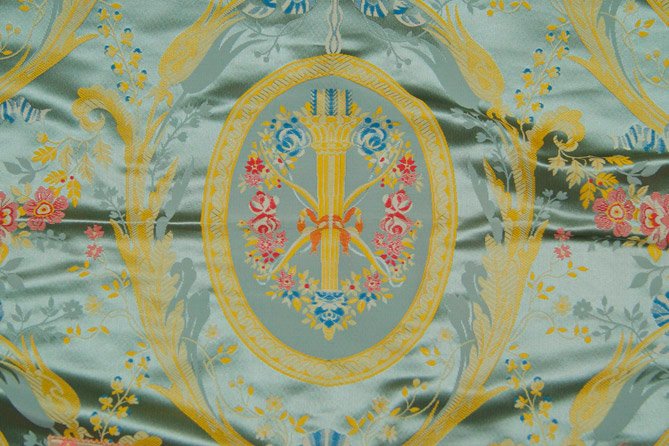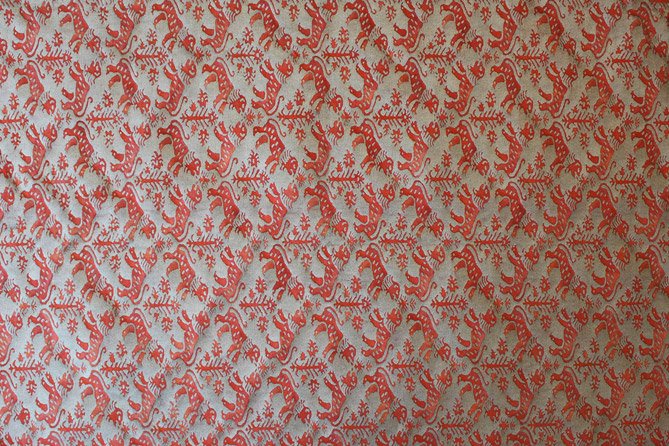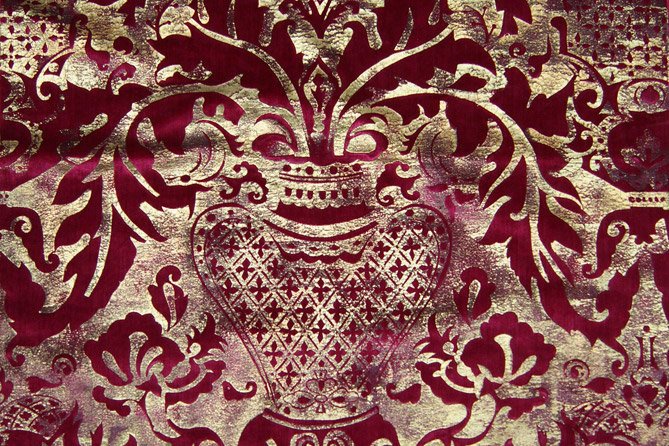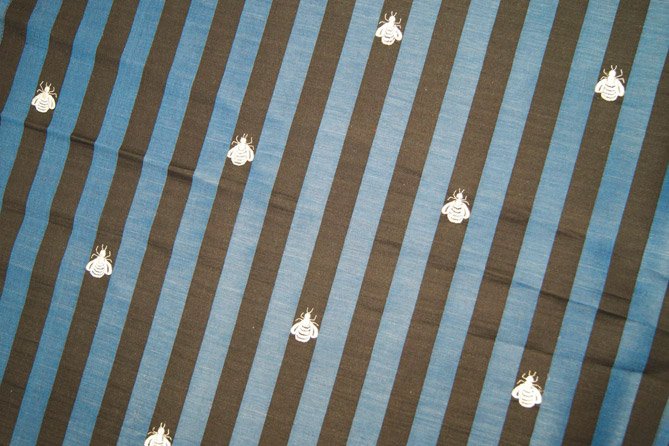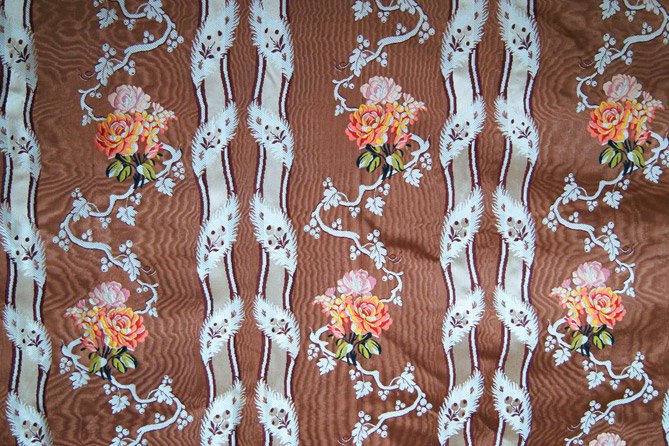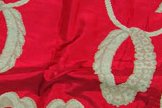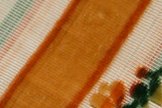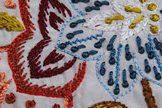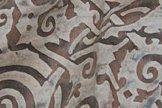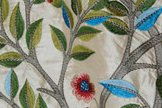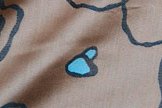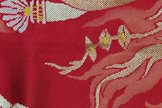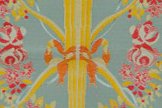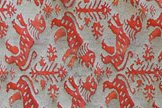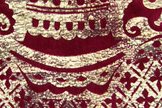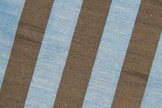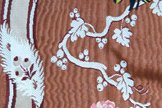Ornate fabrics are not only an expression of their respective style periods,
but they also reflect the contemporary techniques and skills employed
in their making. From medieval narrative textiles and the elaborate brocades
and velours of the baroque period to today's high-tech fabrics, they constitute
an integral part of art history. We work with textiles sourced from the
most prestigious European manufacturers, each fabric reflecting the skill
of many generations.
Toile de soie façonnée (lampas) · late 18th century
«Grand décor à l’antique»
This silk damask fabric is based on an original kept at the Royal Library of Belgium
in Brussels. The fabric is available in five colour schemes.
The Prelle manufactory in Lyon has been weaving silk fabrics since 1752 and has
supplied French palaces such as Versailles, Fontainebleu,
Compiègne and the Louvre.
Velours coupé · in the style of Louis XVI
This silk velours is still woven by hand today, resulting in a narrow fabric
width of 54 centimetres. This type of durable covering fabric with a relief-like texture was
popular in the late 18th century.
The Prelle manufactory in Lyon has been weaving silk fabrics since 1752 and has supplied
French palaces such as Versailles, Fontainebleu, Compiègne and the Louvre.
Biribiss · embroidered silk
The floral pattern is embroidered by hand, faithful to originals originating from the
18th century. The pattern reflects the luxurious variety of Venetian fabrics from the baroque
and rococo periods.
The house of Rubelli in Venice continues the great tradition of Venetian weaving
and embroidery, but also creates new, surprising fabrics in collaboration
with well-known artists.
Maori · printed cotton, traditional New Zealand pattern
The house of Fortuny in Venice has developed an elaborate process
of printing dyed cotton fabrics with gold and silver pigments.
The «Maori» design is available in five colourways.
Kelmscott Tree · William Morris
William Morris (1834-1896), a painter, architect, poet, designer, engineer and printer,
was one of the most influental designers of the 19th century.
The curtain fabric «Kelmscott Tree» ist inspired by bed curtains in Morris’ home,
Kelscott Manor, which were embroidered by his daughter, May Morris.
Damask, Art Déco style · Jacques-Émile Ruhlmann
The Parisian furniture designer and decorator, Jacques-Émile Ruhlmann (1879-1933),
is one of the best-known representatives of the Art Déco style. Taking over his family’s
decorating company in 1907, his furniture and decorative objects were exhibited
in the Salons d’Automne in Paris.
Baroque silk damask (lampas) · Lyon / Venice, around 1700
This fabric is based on a historic original kept at the Abegg Foundation in
Riggisberg, near Berne. This type of silk fabric, known as «chinoiserie», is inspired by
the «étoffes des Indes» imported from China since the early 18th century.
The Prelle manufactory in Lyon has been weaving silk fabrics since 1752 and has supplied
French palaces such as Versailles, Fontainebleu, Compiègne and the Louvre.
Marie-Antoinette · silk jacquard, Empire style (around 1859)
This brocade fabric is woven by the manufactory of Tassinary & Chatel in Lyon,
based on a design found in Marie-Antoinette’s billiards room at Versailles. Founded in 1680,
the company has supplied the French courts of Louis VIX to Napoleon. It is still one of
the most prestigious silk weaving mills today.
Richelieu · gold-printed cotton, French motif from the 17th century
The house of Fortuny in Venice has developed an elaborate process of
printing dyed cotton fabrics with gold and silver pigments. The «Richelieu» design
is available in eleven colourways.
Vase de Chine · Gaufrage doré, Régence period (1715-1730)
The silk manufactory Veraseta in Charlieu (Loire region) has created a new
interpretion of the Régence motif. Gaufrage is an embossing technique whereby
metal paint is transferred onto silk velours at a high temperature, using
carved printing blocks. This interpretation of a medieval technique creates an
extraordinarily sumptuous silk fabric.
Napoleon Bee · Horse hair fabric by John Boyd
John Boyd Textiles, founded in 1837 in Castle Cary (Somerset, UK), keeps up
the proud tradition of horse hair weaving. Horse hair fabric is made using the best quality
tail hair combined with a cotton or silk warp. The fabric is woven on the original
looms from 1870, employing traditional techniques.
«Le Manach», silk lampas, Louis XIV period
Since its foundation in 1829, Le Manach in Tours has been known for its faithful
recreations of historic fabrics. This sumptuous silk damask («lampas»), manufactured by
Le Manach since 1910, is woven from eleven different colours of silk thread.
